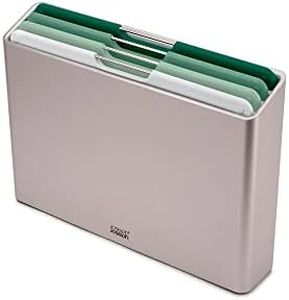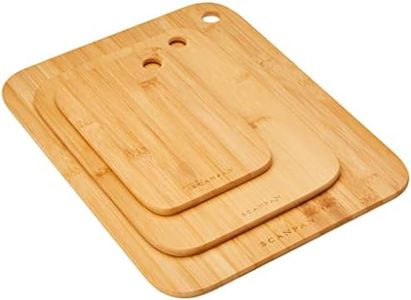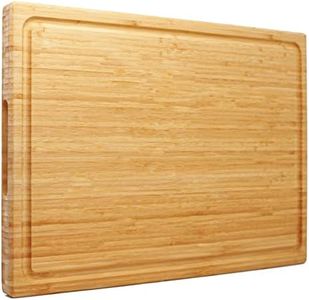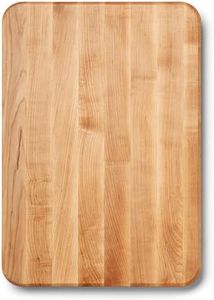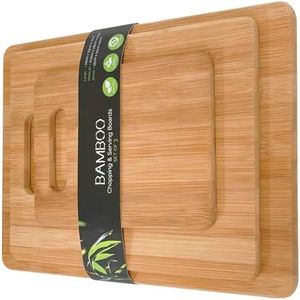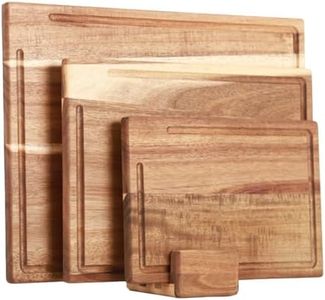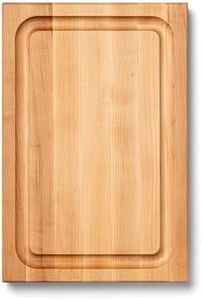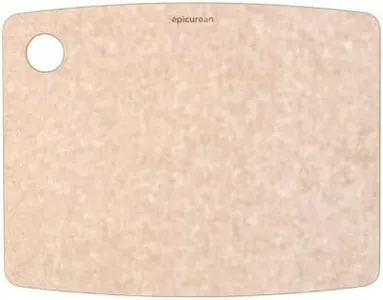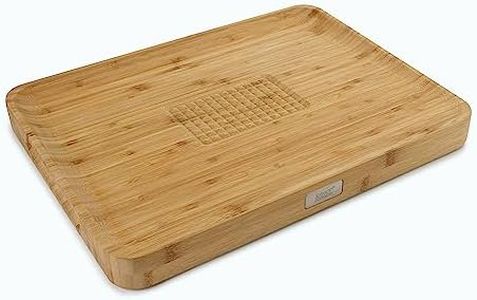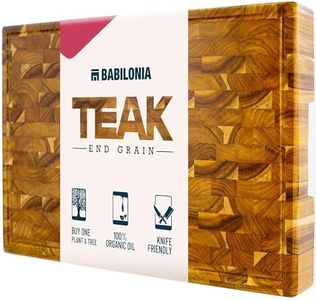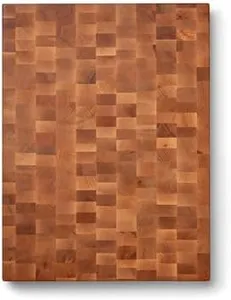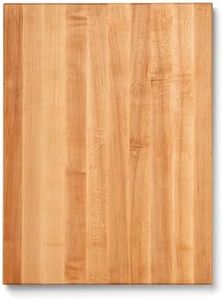We Use CookiesWe use cookies to enhance the security, performance,
functionality and for analytical and promotional activities. By continuing to browse this site you
are agreeing to our privacy policy
10 Best Cutting Board For Meat
From leading brands and best sellers available on the web.Buying Guide for the Best Cutting Board For Meat
Choosing the right cutting board for meat is important for both food safety and ease of use in the kitchen. The surface you cut on not only affects how easy it is to handle raw or cooked meat, but also how well you can keep your workspace hygienic. A suitable cutting board helps prevent cross-contamination, protects your knives, and makes cleanup simpler. Knowing the different characteristics to look for will help you select the best fit for your cooking habits.MaterialMaterial refers to what the board is made out of and common options include plastic, wood, and bamboo. Plastic boards are dishwasher-safe and easy to sanitize, making them a popular choice for raw meats due to food safety. Wood boards are gentle on knives and sturdy, but require more careful washing and periodic oiling to stay in good condition. Bamboo is harder than most wood and absorbs less moisture but may be harder on knife edges. If you often cut raw meat, plastic or bamboo might be easier to maintain, while wood can be great for cooked meats or carving at the table.
SizeSize is about the surface area and thickness of the cutting board. Larger boards provide more space to work with, which is helpful when handling big cuts like roasts or whole chickens, while smaller ones are easier to clean and store. If you regularly prepare large pieces of meat, a bigger board helps keep juices contained and gives you room to work. Thickness offers stability; thicker boards tend to stay in place and resist warping, but can be heavier.
Juice GrooveA juice groove is a shallow channel running around the edge of some boards that collects liquids released as you cut. This feature is especially important for meat, which tends to release juices as you slice. A board with a groove helps prevent spills, keeping your countertop cleaner and reducing mess. If you often cut juicy items or want less cleanup, consider a board with a well-designed groove.
Ease of CleaningEase of cleaning indicates how simple it is to wash and sanitize the board after use. Plastic boards can usually go in the dishwasher, ensuring thorough disinfection, which is important for raw meats. Wood and bamboo should usually be hand washed and dried immediately to prevent cracking and warping. If quick and frequent cleaning is important to you, plastic may be most convenient.
Knife-friendlinessKnife-friendliness is about how kind the board is to your knife edges. Softer surfaces like wood help keep your knives sharp longer, while harder materials (like some bamboo boards) can dull knives more quickly. If maintaining your knives’ sharpness is a priority, choose materials like end-grain wood, and avoid overly hard or glass surfaces.
Non-slip FeaturesNon-slip features are elements that help the cutting board stay in place during use, such as rubber feet or textured grips. A board that slides around can be unsafe when cutting slippery or heavy meat. If safety and stability are concerns, look for boards with built-in grips, or plan to use a damp towel underneath for added traction.
